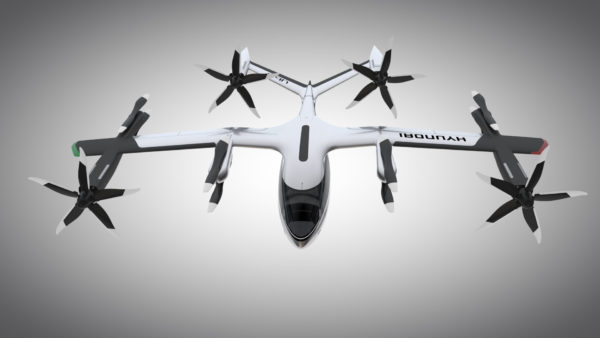
People and everything from smart home devices, wearables and cars will be connected to the Internet in 2020 and the decade beyond. Technology is increasingly becoming intertwined into our lives. This is the year of “Connected Everything++”.
This era will give rise to several issues, some of which have already dominated headlines. Concerns of maintaining tenable cybersecurity and privacy and managing the tsunami of data will continue to grip organisations’ attention and budget.
The impact of social media on society and democracy will remain a key theme of governments, policy makers, voters and consumers. Below are some of the key trends of the “Connected Everything++” universe to look ahead to in 2020 and the coming decade.
Security awareness is on the rise, that is good news. However, it does not make enterprises and consumers more secure.
Though enterprises will continue to implement and tighten prevention and protection measures, it has been proven repeatedly that people are the weakest link in any security plan.
Someone falls prey to an email phishing scam, then allows hackers entry into the organisation which leads to data breaches and/or online theft. This will be a familiar story this year as it was in previous years.
Security in 2020 will increasingly be about protecting organisations from You, the office worker, the engineer, the healthcare worker, the grocer, the aircon maintenance technician.
Security specialists must assume everyone is untrusted until proven otherwise. Similarly all devices and networks are untrustworthy until proven otherwise.
Cloud computing will continue to accelerate faster than ever. Research firm IDC predicts that public IT cloud services revenue will grow to over US$200 billion this year.
Accelerating this trend is edge computing, which sees organisations deploying millions of sensors on the edge of their networks to collect information on a myriad of activities. This information needs to be stored and processed.
Cloud in 2020 will increasingly be hybrid clouds and multi-vendor subscriptions. Large enterprises will mix and match cloud computing services in unique ways.
They can blend license, subscription and usage models to match their requirements. They will also likely look to the cloud for a full stack of data analytics offerings as well as artificial intelligence (AI) tools.
Data centre market growth parallels the rapid growth of cloud and the explosion in data. IDC expects the global datasphere to explode to 175 zettabytes by 2025. Data is everywhere, it is in the air we breathe.
Driving its growth is the demand for localisation and latency. As data in each country grows, concerns over data sovereignty will emerge and the pressure to store data in-country will mount.
Latency is an issue for content providers such as Netflix and music streaming services. As on-demand services, they cannot afford to suffer from lag, so their content will have to kept in close proximity to their customer base.
Data centre growth in 2020 will spotlight on Southeast Asia. Global real estate company Cushman and Wakefield reported that SEA in the next five years will be the fastest growing region for co-location data centres, with its market size expanding by a compounded annual growth rate (CAGR) of 13 per cent between 2019 and 2024. This is spurred on by the rise of cloud computing and digitisation in the region.
5G in enterprises will see a higher adoption, after somewhat anti-climactic and uneven growth in 2019. In 2020, 5G can be a game changer with increased connectivity and ultra-low latency revolutionising the way businesses operate.
That will be important for the implementation of self-driving vehicles where response time and information needs to be triple fast to avoid collisions.
Will 5G in 2020 be the real game changer that it has promised? It has been the dominant topic of discussion but it has not quite rolled over in terms of real enterprise applications.
Sustainable goals in ICT has taken on new urgency. Going green, decreasing carbon footprint, and recycling has taken on greater urgency as the governments and organisations battle to save planet earth.
Corporations around the world are already invested in this effort. Computer company Dell will recycle a product for every product a customer buys by 2030.
Plus, more than half of its products will be made from recycled or renewable materials and it will use such materials in all its packaging. Apple also aims to make products without mining new materials from the earth. It is inventing more efficient ways to recycle materials back into its devices.
Singapore contributes around 0.11 per cent of global emissions. The government is committed to reduce its carbon footprint. It has one of the highest penetration of mobile phones – every tertiary student has a laptop and almost every home has a PC.
In gadget-crazy Singapore, sustainable awareness in 2020 needs greater action to move the needle. Tech companies and telcos can make the first move, guiding consumers here to properly get rid of their old gizmos from game consoles and smartphones to monitors and lithium ion batteries.
Ethics in AI: Technology cuts both ways: it can be harnessed for good or bad – nuclear energy is a case in point. Singapore has formed a committee on AI ethics and governance.
AI ethics in 2020 will be about responsible innovation and technology disruption. These are issues developers, entrepreneurs and investors must think about on the same level as their earnest pursuit of revenue and market share.
As for the decade that will end in 2030, here is a reading of the tea leaves:
1. There will be flying taxis
It’s not a far-fetched idea. At CES, Hyundai and Uber demonstrated a prototype flying taxi which can take up to five persons, cruise at about 290km/hour at 300 to 600 metres in the air.
It will have two tilt-rotors on the tail, and 10 other rotors distributed around the egg-shaped cabin.
It is an electric vertical takeoff and landing (eVTOL) aircraft, similar to the Volopcopter trialled by Diamler in Germany. Like self-driving cars, the path to flying taxis is not going to be easy. Regulation, safety and trust issues are the high hurdles to jump over before a flying taxi is in the air.
2. Commercially available quantum computer
Last October, Google announced that its 53-qubit quantum processor needed only 200 seconds to complete a problem that would have required 10,000 years on a supercomputer.
Together with IBM and a handful of other companies, Google is rushing towards a market-ready product. However, development is still in the prototype era. The number of qubits or quantum information produced are doubling every six months. But many are imperfections and fail a lot.
It will need time for the necessary electronic components and software to be developed for a working commercial quantum computer to reach the market.
It will likely appear towards the end of the 2020s. Will it kill supercomputers? Powerful PCs networked together have not killed the mainframes. Supercomputers will evolve as will computer hardware in the era of quantum computers.
3. 3D-printed anything
3D printers are becoming more powerful. They can even print houses. Scattered projects in Russia, the US, China and around the world prove that houses can be built with 3D printers. They tend to be smaller buildings and standalone ones. The cost is also very affordable, between US$5,000 and US$10,000.
For a small country like Singapore, a small 3D printed house could be considered, but hurdles like regulation and safety will be major challenges.
A 3D house may be commercially available in the US and China in the second half of 2020s before the concept makes its way to Singapore. But here’s a more hairy thought: No need to wait for a living donor because human organs like liver and kidney can be 3D printed.
If there is one certainty technology promises, it is that it does not stand still.






